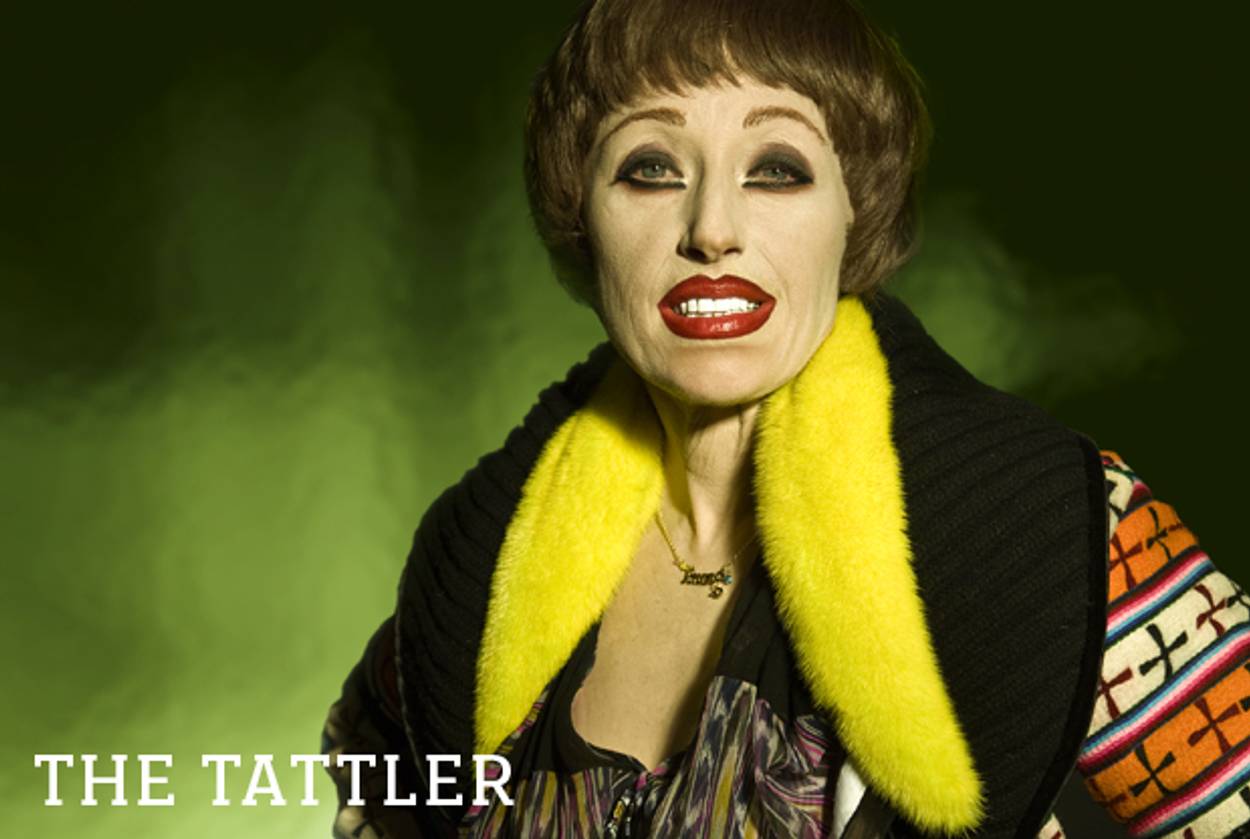Type-Faces
A MoMA retrospective reveals an unlikely connection between Cindy Sherman and Jewish stereotypes—and forces questions about individualism




There’s something undeniably—for lack of a better word—tickling about seeing the new Cindy Sherman retrospective at the Museum of Modern Art. After all, her signature oeuvre of witty, often subversive conceptual self-portraits, in which she effortlessly slips into a wide variety of compositional guises—movie starlets, historical paintings, depressed society women, manic circus clowns—are the antithesis of the macho, humorless Abstract Expressionists MoMA usually pulls out the top-floor big guns for (not to mention the big-name Impressionists/Fauvists/Cubists designed to pack in the crowds that feel most comfortable viewing art they have previously seen reproduced in miniature on their nighttime mug of chamomile). Looking at Cindy Sherman’s work, I’ve always had the same thought, “Oh, she’s one of us.”
But it wasn’t until I was face-to-face with the enormous wall mural that opens the exhibition, featuring digitally manipulated, 7-foot images of the artist in a faintly Fractured Fairy Tale setting—in my favorite, she brandishes a huge toy sword while wearing an ill-fitting felt nude suit and wedge haircut: Dorothy Hamill meets Joan of Arc—that I finally stopped to ask myself exactly among which “us” I was categorizing her. Women? Artists? Funny people? Sherman’s work is most often discussed in feminist terms, and despite my hatred of the ghettoization this implies—as though the work of women can be understood only in terms of the female experience, while a man saying the same things gets to be seen as universal—this was the analysis I accepted on some subconscious level; it’s pretty hard, as a woman, not to look at her breakthrough 1977-80 series Untitled Film Stills and be hit palpably in the heart with the sense of yearning, of possibility, the joy and the tyranny of being a woman; of being at once the observer and the observed, of the exhilaration of crossing a city street sure that you look exactly like Audrey Hepburn and the crushing sense of failure when you pass your reflection in a shop window to see that this is emphatically not the case.
So, I was interested, on this visit, to find myself examining Sherman’s photographs through a Jewish lens, if you’ll pardon the pun. (Was that even a pun?) Jewish culture has always been rife with precisely the type of archetypes Sherman has interrogated; not for nothing does Tevye introduce the villagers of Anatevka each as their own special “types.” From the shtetl we inherited the yenta, the yeshiva bucher, the gonif, the shtarker; the postwar era gave American Jews self-hating punchlines like the JAP and the nebbish; the Soviet Union had its “Rabinovich” jokes and Israel its brash “muscle Jews” who know how to clean a gun and never saw a line they didn’t want to push to the front of. (I even got elbowed out of the way by a couple of them while I was waiting in line to get into the exhibit.)
We use archetypes to explain ourselves to others; we grunt allusively about “you know, Jewish mothers,” who loom with omniscient Zeus-like supremacy over all others; we lament aloud—as I did just the other day—how Vera Bradley no longer offers free monogramming on the uber-preppy tote bags they sell on their website, and then follow it up with a self-effacing, “That might be the single JAPpiest sentence I have ever uttered.” A certain facility with these archetypes—or stereotypes, if you like—advertises your membership in a particular kind of club, one where mothers call every 20 minutes, where the quality of toilet paper in the hotel bathroom is of paramount importance, and everybody’s shrink is gone in August.
Virtually every Jewish institution (and particularly those targeted to youth) lists somewhere among its goals that of instilling, or perhaps affirming, a “positive Jewish identity.” Not only does this statement carry a vague undertone of paranoia, an inference that Jewish identity is something under inherent, unspecified attack, it also ignores the fact that far from being a natural state, “Jewish identity”—as it is often institutionally defined by giving money to the correct causes, or as a friend said the other day, by pronouncing the names of Jewish holidays with the distinctly Hebraic flair that shows “you’re more religious than I am”—is as much a construct as any other sort. After all, isn’t a black hat or a sheitel—no matter how deeply felt the sentiment behind them—as much a costume as, say, black lipstick and a spiked dog collar? (Believe me, I’ve seen my contemporaries go both ways, and the only real difference is the goth kids usually grow out of it.) Both are visual signifiers of one’s membership in one group, to the exclusion of others. If you don’t belong, if you’re not one of us, you must be one of them. And from there, it’s a very short step to George W. Bush’s infamous statement that unwittingly, yet succinctly, summed up millennia of tribalism and internecine warfare: “You’re with us or against us.”
Cindy Sherman’s work, with its unsparing view of the individual behind the public mask, challenges us to ask a single question, terrible in its simplicity: “Why can’t we all be us?”
Rachel Shukert, a Tablet Magazine columnist on pop culture, is the author of the memoirs Have You No Shame? and Everything Is Going To Be Great. Starstruck, the first in a series of three novels, is new from Random House. Her Twitter feed is @rachelshukert.
Rachel Shukert is the author of the memoirs Have You No Shame? and Everything Is Going To Be Great,and the novel Starstruck. She is the creator of the Netflix show The Baby-Sitters Club, and a writer on such series as GLOW and Supergirl. Her Twitter feed is @rachelshukert.